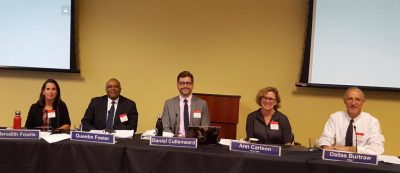New California Report on State Climate Policies Released
Independent Emissions Market Advisory Committee Recommends Focus on Transportation, Affordability, Allowance Banking, Allowance Supply and the Effects of Overlapping Policies in the Regional Electricity Market

The California Independent Emissions Market Advisory Committee released its annual report yesterday making recommendations about California climate policy. I serve as the Vice Chair of the committee and as the Speaker of the Assembly’s appointee.
Our report makes five recommendations:
- that the state focus on the affordability of its carbon policies, with special concern about rising electricity rates and complementary policies;
- that the Air Resources Board provide data and report on the ways in which policies in states participating in regional electricity markets can conflict with and undermine the effectiveness of state carbon policies;
- that CARB provide metrics for reporting unused allowances in order to allow analysts to assess the supply of unused allowances;
- that the Board develop mechanisms – preferably rule-based — to adjust the cap-and-trade market allowance supply in the event that policy makers determine the supply will undermine emissions goals;
- and that California prioritize policies to accelerate the turnover of the vehicle fleet in order to ensure that the state meets its transportation sector emissions goals.
Our committee includes Dallas Burtraw of Resources for the Future as its Chair, Danny Cullenward of Near Zero and Stanford, and Meredith Fowlie of Berkeley Agricultural and Resource Economics. Quentin Foster, the fifth member of the committee, resigned when he took a new job with CAISO and did not participate in writing the report. Read the report!
Reader Comments
One Reply to “New California Report on State Climate Policies Released”
Comments are closed.






These are good recommendations, but the Report does not appear to consider the extent to which the shift from coal to natural gas has led to reductions in GHG emissions. Nor does the report appear to consider the necessity for technological advancement in order to shift from natural gas to cleaner energy sources beyond 2030.
The shift from coal to natural gas has been the primary factor in satisfying California’s 2020 emissions limits, and may enable 2030 limits to be satisfied with cap-and-trade allowances. Companies have recently increased allowance purchases (which do not expire) to meet mandatory limits through 2030.
However, mandatory limits change to “goals” after 2030, which softens “caps” and may lead to greater allowances and weakening net declines in emissions.
This change from limits to goals after 2030 may be tacit acknowledgement that current renewable technologies cannot supply constant, reliable energy in sufficient quantities to meet increasing demand after 2030.
Consequently, it is also necessary for California to (1) determine the extent to which it is relying on natural gas to achieve its mandatory limits through 2030; (2) the extent to which it must develop or acquire new technologies or improvements to existing renewable technologies in order to achieve its goals beyond 2030; and (3) provide funding for technological research and development from revenues generated by auctioning allowances.